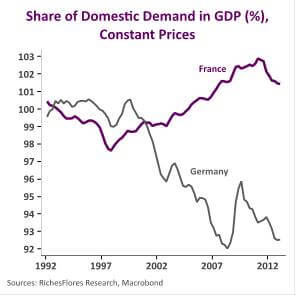
Trends in the financial markets have accelerated in the last few days. After hesitating slightly at the start of 2018, it is increasingly obvious to investors that reflation is around the corner. That belief is based on widespread growth, a surging oil price, the first positive effects of Donald Trump’s tax reform – with giant US companies promising to repatriate profits – and good news on investment and jobs. It is hard to see how that situation could fail to end the phase of latent deflation in the last few years and support expectations – seen throughout 2017 – of inflation getting back to normal. The impact of rising oil prices alone could significantly change the inflation situation, judging by how sensitive inflation is to movements in oil prices. If crude stabilises at $70 per barrel between now and the summer, inflation could rise by more than half a point in the industrialised world, taking it well above the 2% target that it touched only briefly in February 2017.
So what could prevent a significant increase in interest rates? It is very tempting to change our outlook for 2018. How is the interest-rate environment likely to develop?

